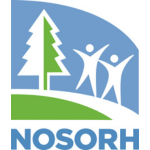by Beth Blevins
In the quest for hospital quality improvement, the Michigan Center for Rural Health (MCRH) is playing a unique role, serving as a liaison between independent Critical Access Hospitals (CAHs) in the state and the state’s hospital association.
“Usually we hear of SORH (State Office of Rural Health) Flex programs subcontracting work to their local hospital association,” said Crystal Barter, MCRH Director of Performance Improvement. “This is the opposite situation—the hospital association subcontracts with our Flex program. Due to the nature of our work, we have a robust relationship with all 21 of the independent CAHs in the state—our Flex program acts as an improvement liaison for them—so it makes sense for MHA (Michigan Hospital Association) to leverage that relationship as they work to improve patient safety and quality across the entire State of Michigan.”
In September 2016, MHA’s Keystone Center was awarded a (HIIN) contract by the Centers for Medicare and Medicaid Services (CMS). The goals of HIIN are focused on reducing the rates of readmissions and hospital-acquired conditions (HACs) such as pressure ulcers, sepsis, and surgical site infections. Under the contract, the Keystone Center partnered with the Illinois and Wisconsin hospital associations to form the , with the aim of reducing HACs by 20 percent and readmissions by 12 percent from a 2014 baseline.
MICAH QN Member, Amanda Knuth, Spectrum Health Reed City, providing peer education on Infection Prevention and Antimicrobial Stewardship at the MICAH QN Annual Meeting.
“The Keystone Center is a national leader in quality and patient safety,” Barter said. “We’ve had a long partnership with them on a variety of initiatives, but this is the first time they’ve formally sub-contracted with us to ensure that the independent CAHs in our state have a resource outside of their entity to work on HIIN.”
The program builds on what Barter calls a “long-standing quality network” that MCRH, with Flex funding, supports for all CAHs in the state. MCRH hosts quarterly meetings, a listserv, and strategy group meetings for the quality network. “We want to make sure that HIIN work is engrained in the quality network and they don’t feel like they are two separate initiatives,” she said.
Barter continued, “When we talk about HIIN work, it’s more of a cultural change within an organization versus a specific initiative that we’re working on and then move away from. We want it to be the foundation for all of their other patient safety work as well.”
HIIN requires hospitals in the program to follow a matrix, submitting monthly data with the goal of improving their baseline. “What I do on a regular basis,” Barter said, “is monitor the data submission metrics, then work with Keystone staff to put improvement actions into the hospitals based upon the data.”
MICAH QN Executive Committee members holding the Certificate of Achievement recognizing Michigan as a Top 10 State for CAH Quality Performance.
In addition, Barter meets with MHA staff regularly and they attend the quarterly network meetings. “There’s that face-to-face communication that happens quite often,” she said. “We sit down and look at the data and determine if it’s something that can be improved upon by either bringing in a consultant or learning from their peers, or we determine what an appropriate resource might be and go from there. At the end of the day it’s up to the MHA staff to give it the final say because they have the funds, but they do keep us looped in on that conversation and appreciate the insight that we can provide.”
Kristy M. Shafer-Swadley, coordinator of patient safety and quality at MHA Keystone Center, praised the strong partnership between the MHA Keystone Center and MCRH. “We continually apprise each other on any updates, needs, or initiatives,” Shafer-Swadley said. “MCRH and the MICAH Quality Network have established trust within the group of CAHs, and members feel safe to share and collectively help and support one another. Working together helps our members know we’re a unified team and they can come with questions to either of us. MCRH and MHA Keystone Center interact with CAHs in different areas at various times, therefore it’s beneficial for us to support each other in order to best support our hospitals.”
Barter said she hopes other SORHs will consider this kind of arrangement because it offers financial benefits. “Absolutely other SORHs could do this,” she said. “SORHs may be used to taking an aspect of their Flex grant and sub-contracting it to the hospital association to implement, and not vice-versa. SORHs can leverage their value and reputation among rural providers to obtain the sub-contracts themselves and get additional revenue.”
Another benefit, Barter said, is the learning opportunities this arrangement affords. “I’ve been able to learn a ton about the concepts within patient safety that before I only knew of in a broad fashion,” she said. “It’s a good opportunity for SORHs to build internal capacity as well.”
————————————————————————————
Does your SORH have a “Promising Practice”? We’re interested in the innovative, effective and valuable work that SORHs are doing. Contact to set up a short email or phone interview in which you can tell your story!
